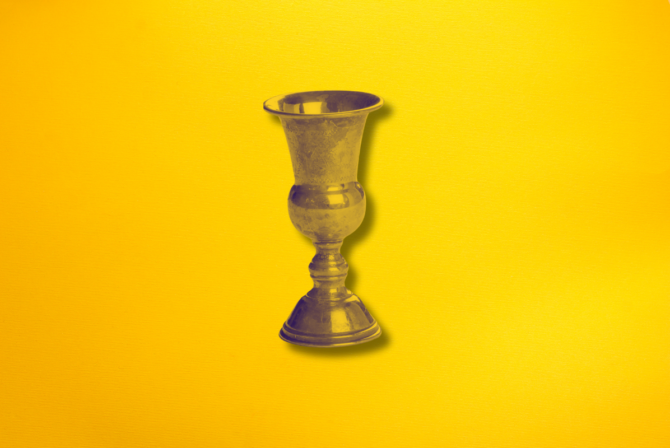When I first starting learning about Judaism, one of the biggest attractions for me was that so much of it was about doing and so little about believing. Sure, there was that piece about believing in one God, but beyond that, there wasn’t a Nicene Creed-style list of beliefs you had to subscribe to. It was such a relief for me, after years of feeling like a bad Christian because I couldn’t wrap my head around virgin birth and resurrection, to have this direct line to God, a relationship I could understand and build, in all of its fierce simplicity, just by doing.
I got right down to the doing as soon as I could: Shabbat, saying blessings, the Birkat Hamazon, hand washing, saying goodbye to bacon… I dove right in. But there was one practice I could never manage and my inability to make it happen has really bothered me over the years: fasting.
Now, I love to eat. Back in the days when I was training seriously as a ballet dancer, I knew that my C-cups were a career limitation and wondered about whether I could lose enough weight that I’d get down to a more tutu-friendly cup size. I could never even attempt it; I would get dizzy if I went more than two hours without food. Once, in university, I fainted in a crowded Toronto subway station because I skipped lunch. One meal missed and down I went. I am that person who always has a granola bar or dried fruit in her purse and whose husband will coax her with a glass of orange juice when she gets cranky.
The word “hangry” came into the lexicon to describe people like me, so when fasting came up in my conversion program, I had a good reason for opting out. I would tuck a meal replacement drink into the synagogue fridge on Yom Kippur and take sips when I started to get light headed, figuring that eating small amounts of something very unappealing was as close as I’d ever get to fasting.
Then came the breastfeeding years. Pregnant and breastfeeding mothers aren’t obliged to fast and I’m one of those full-term breastfeeders, so we’re talking about years of exemption here. Last year was the first year that neither of those exemptions applied and I approached Yom Kippur wondering about whether I might be able to finally try fasting for the full 25 hours.
What finally gave me the motivation to try was watching my Muslim neighbor fast for Ramadan, which fell over the summer last year. There she was, day after very long day (the summer sun doesn’t set until 9:30 p.m. here and it rises at 5:30 a.m.), not eating or even drinking in the blazing heat. I thought to myself: If she can do it for a month, I can do it for a day.
It turns out that the slowing metabolism of age has a silver lining. After feeding the kids breakfast and rushing out the door with our caffeine-deprived service leader (ah, the glamorous life of a synagogue president!), I managed to get through the whole day without eating or drinking. We have a special tradition in our community: One of our members brings in fresh-cut herbs from their garden for the havdalah at the conclusion of Yom Kippur. We each get a sprig to sniff and after my first full day of fasting, nothing has ever smelled so good.
It felt incredibly fulfilling to be able to experience the totality of the holiday, to feel like part of the tribe, albeit a slightly kvetchy one, on that holiest of days. It was so much more spiritually meaningful to really feel empty and longing as I prayed instead of feeling slightly guilty.
So this year, when we hung up our new calendar in the kitchen, I marked off all the fast days because I’m actually looking forward to them. I’m excited to challenge myself to find meaning in this mitzvah, the one that took me 11 years to try.
Read More:
How to Choose a Hebrew Name for Your Baby
No One Prepared Me for My Son’s Bris
9 Surprising Women Who Are (Or Were Raised) Orthodox Jewish







